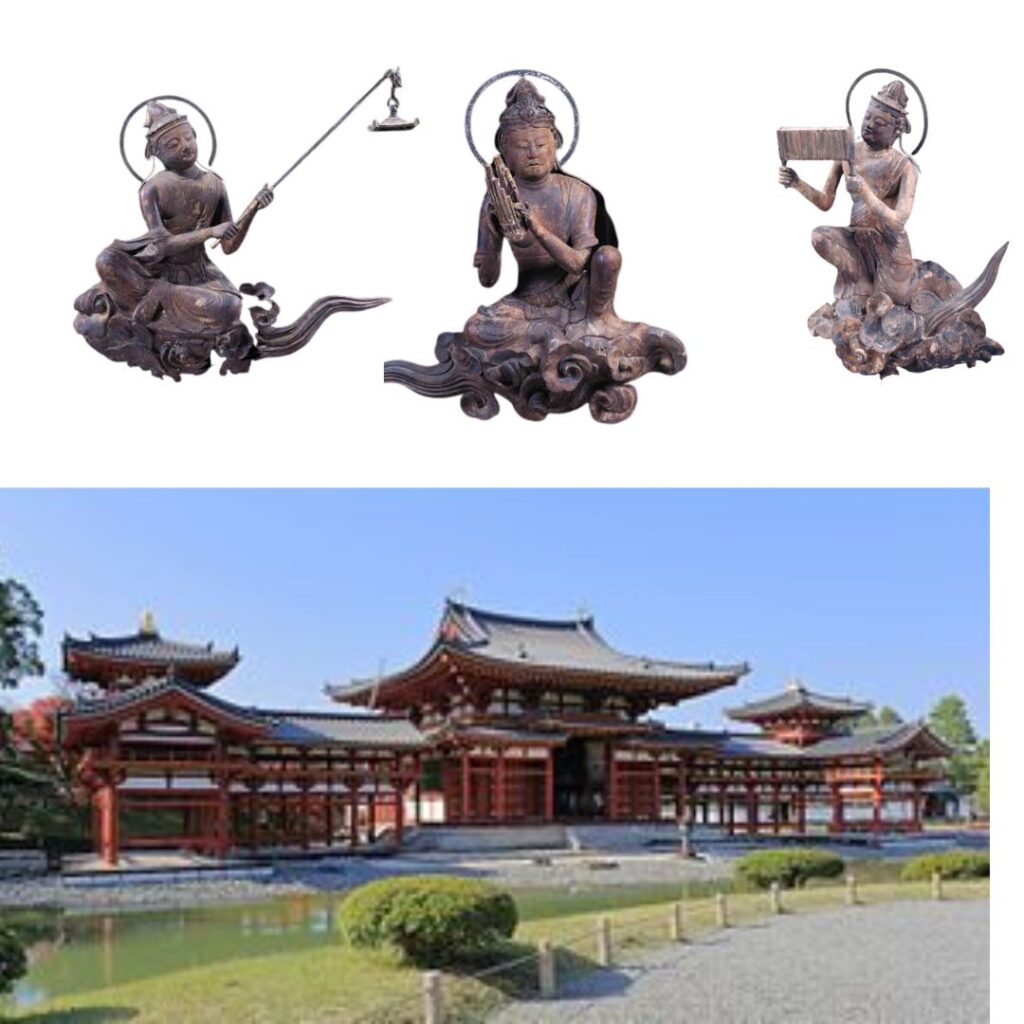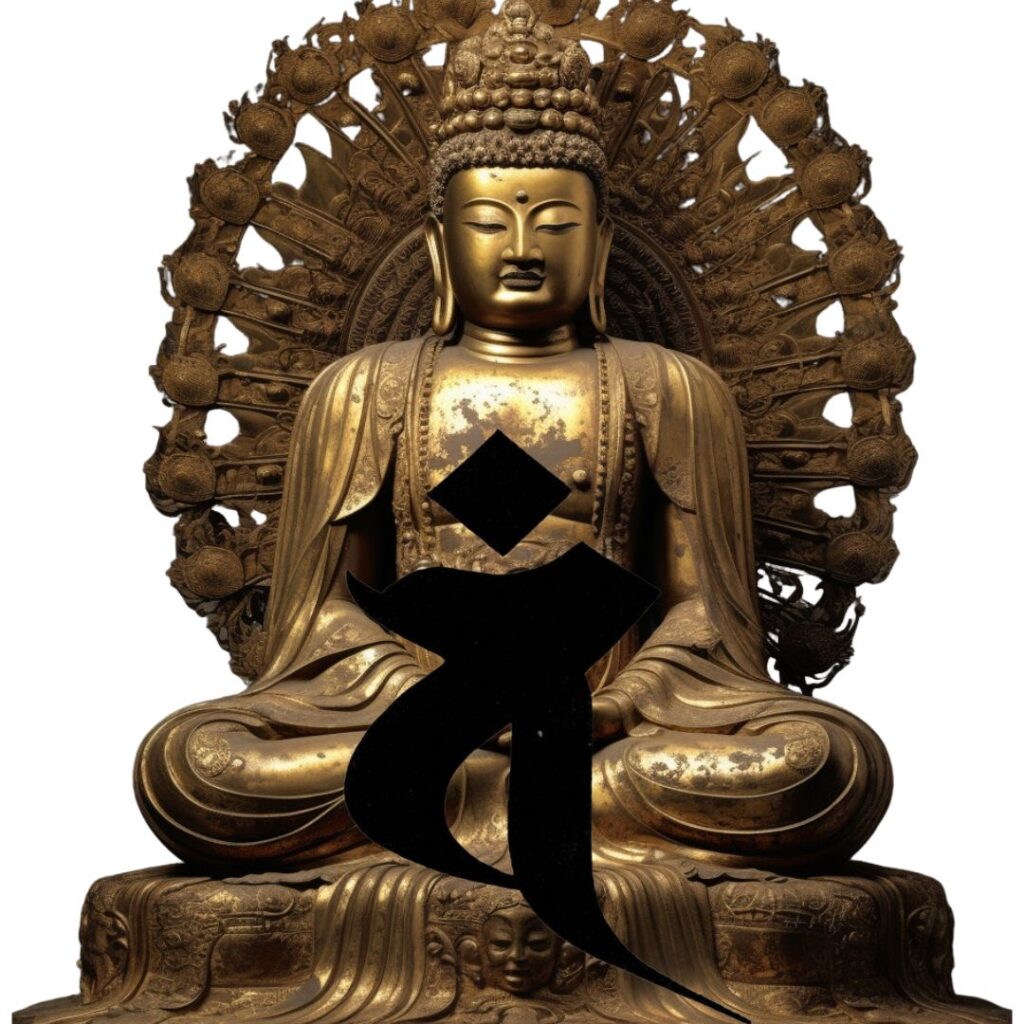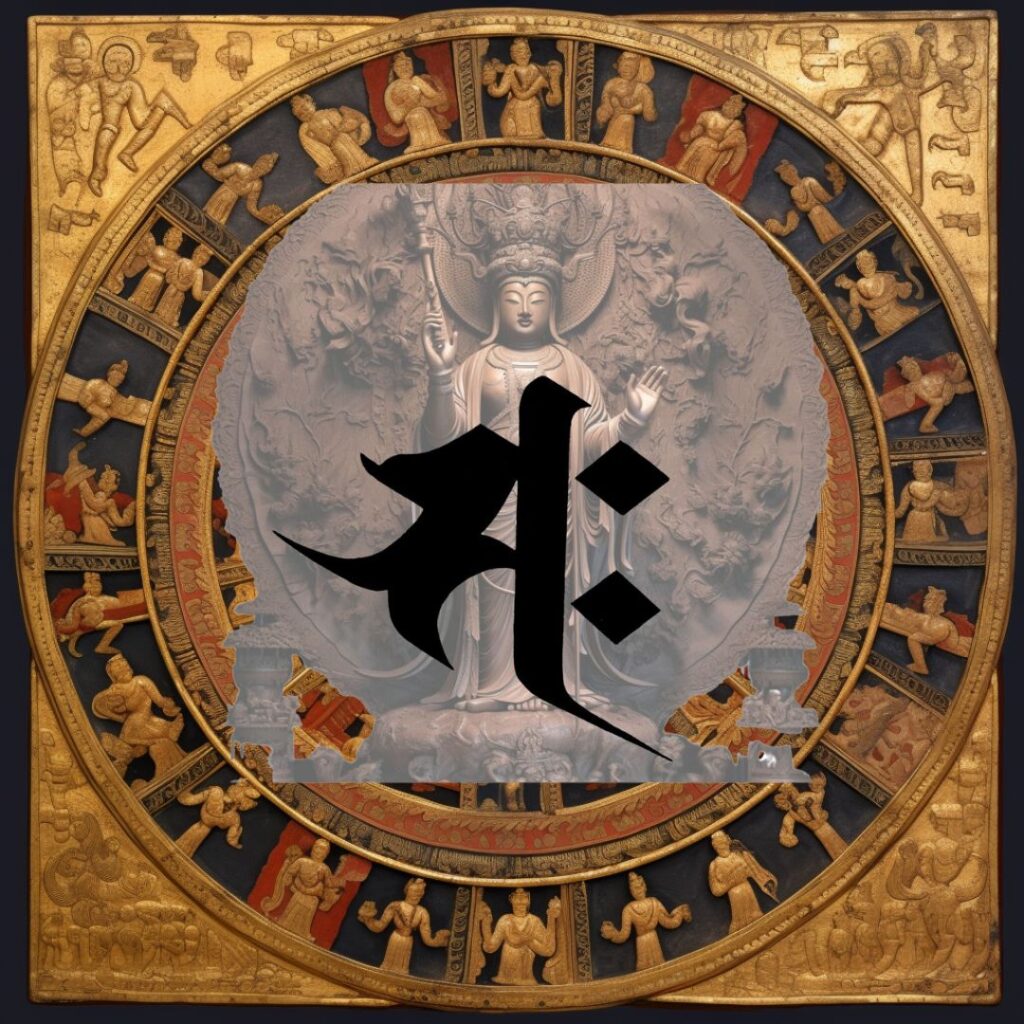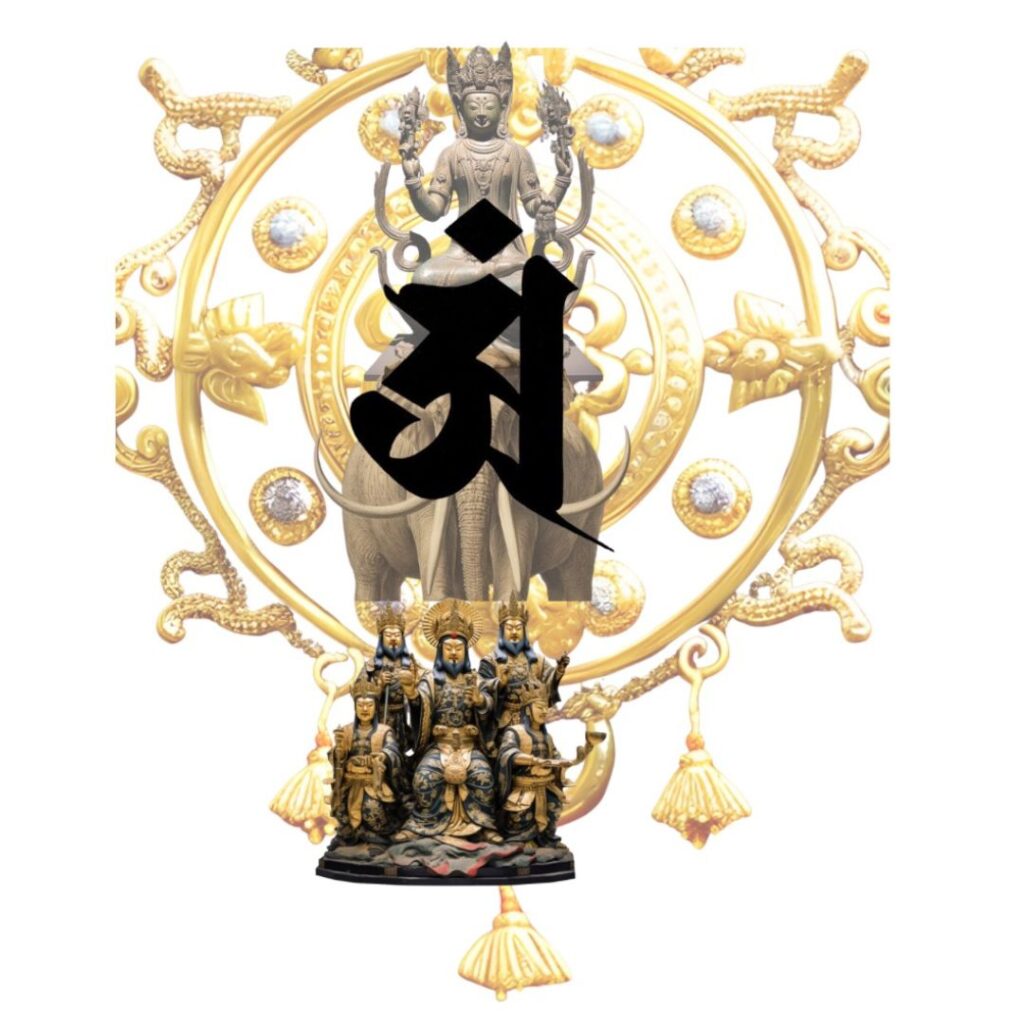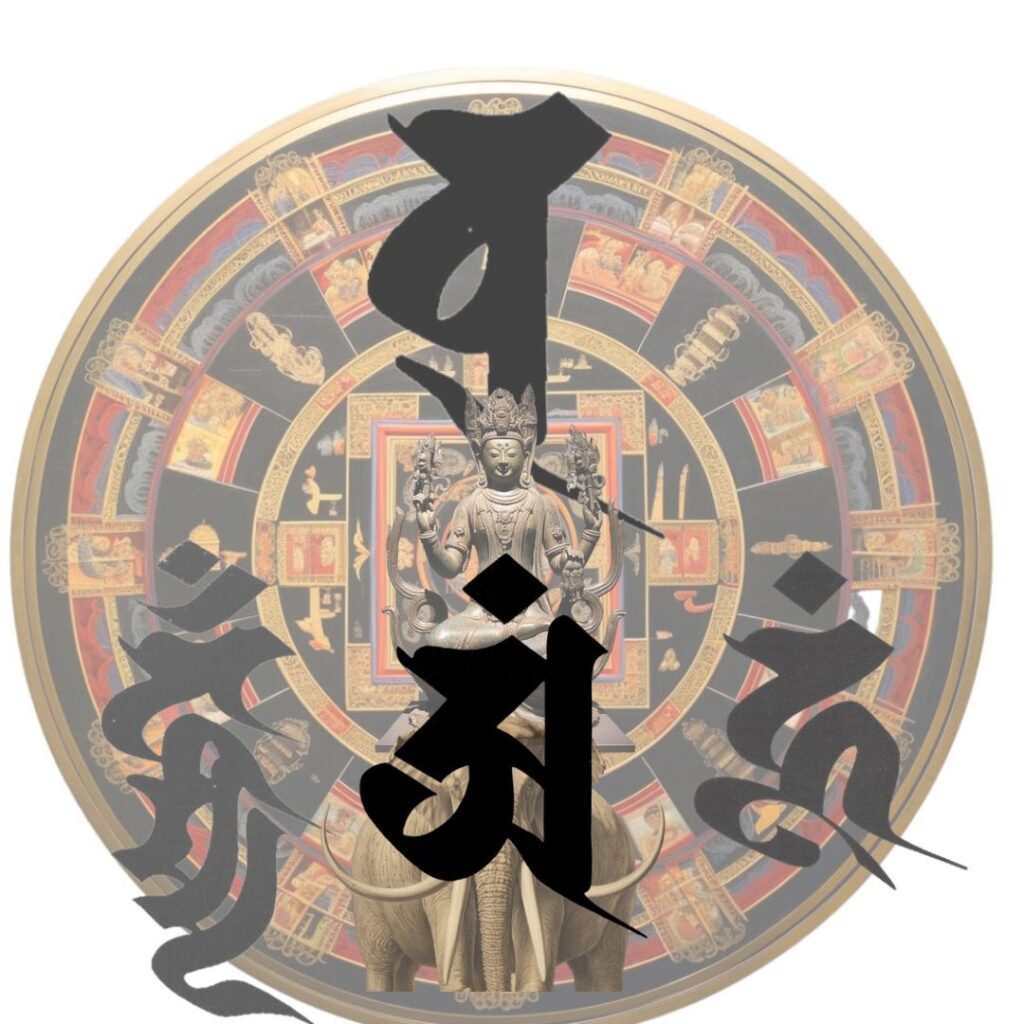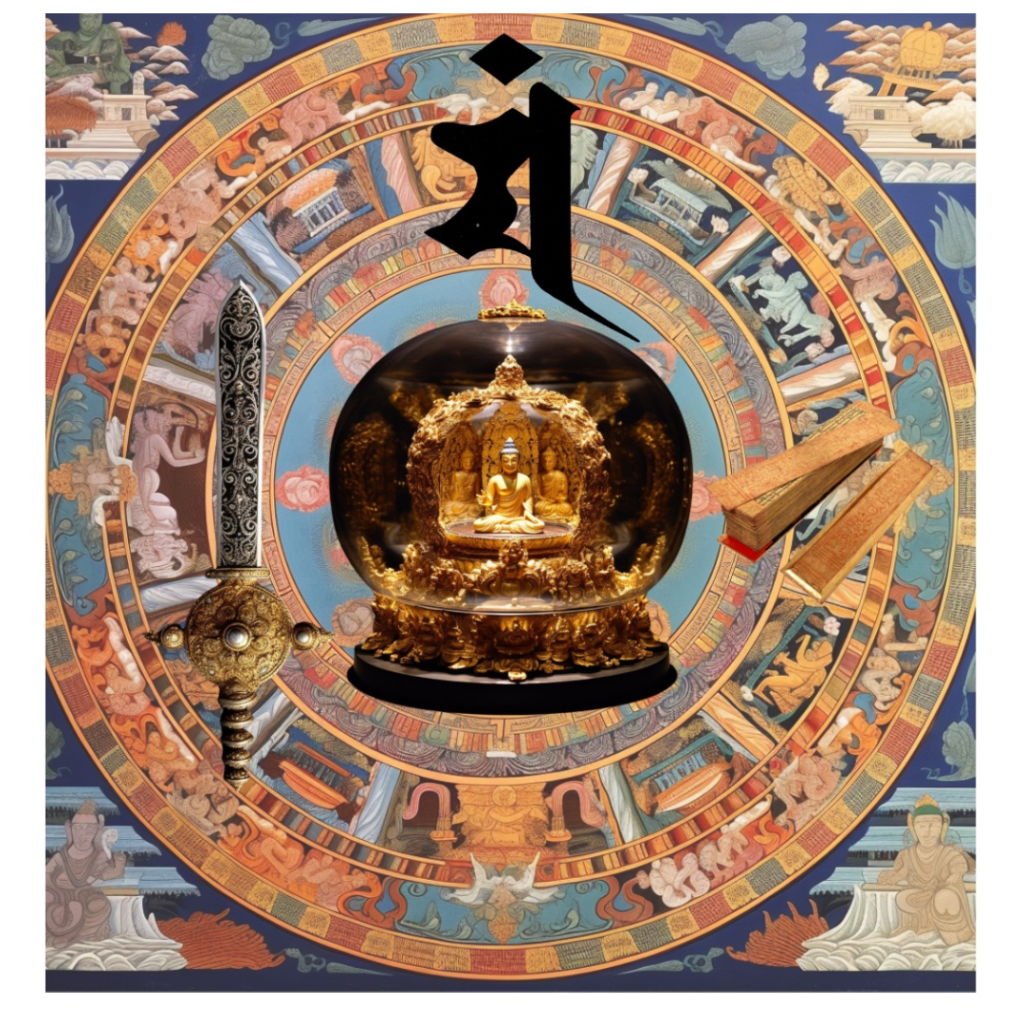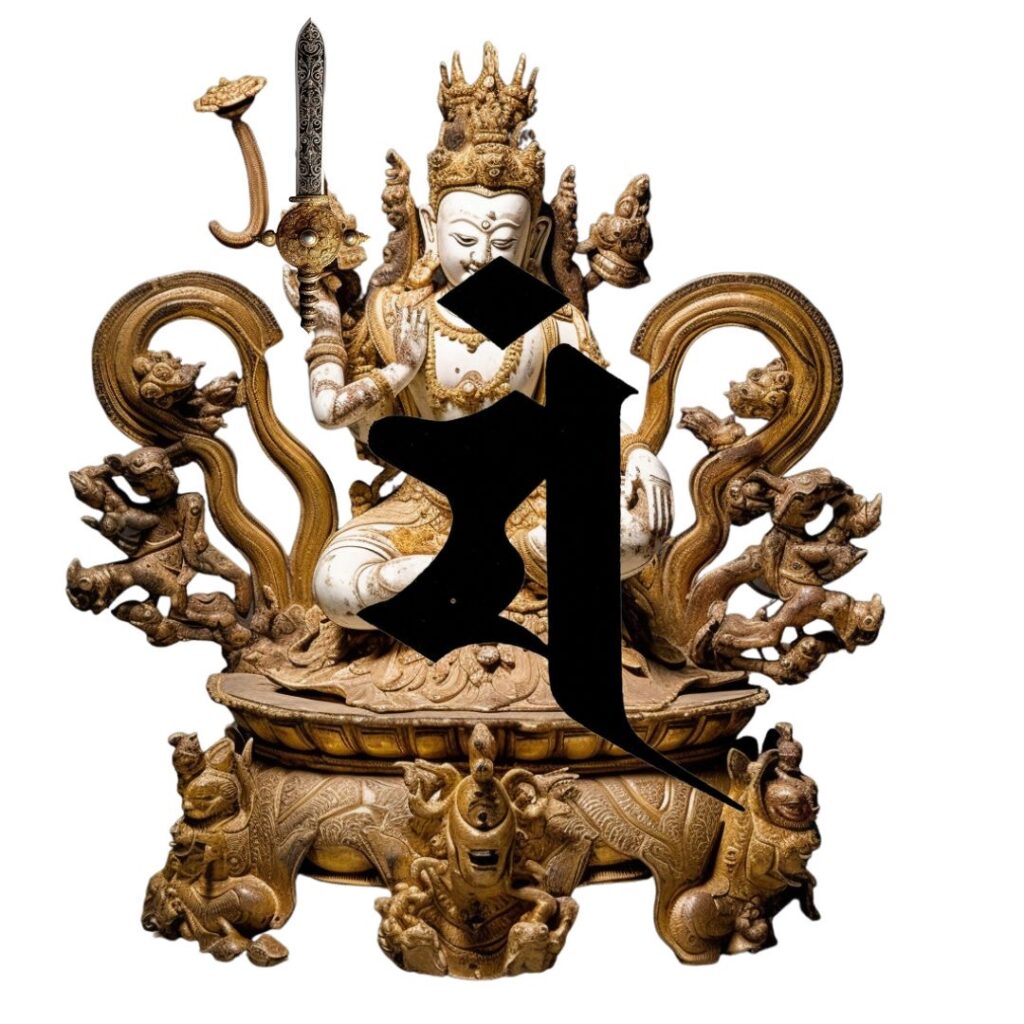Ichikawa theory related to esoteric Buddhism technique “Equivalent conversion expansion theory”
Ichikawa theory related to esoteric Buddhism technique “Equivalent conversion expansion theory”
たとえば、
そんなことがほんとうにできるのか? いったいどうやってそんなことができるのだ、と。
それもたしかにもっともなことで、私自身、身をもってこのの、自分でこの 技術を解明するまでは、 ぜったいに信ずることができなかった。 私は単身、五〇〇〇年の間秘密 のヴェールにつつまれてきたこの不思議な技術にいどみ、その秘密を解いた。それは、信ずるこ とのできないほど精妙な生化学に立脚したおどろくべき技術の応用であった。
さきにもちょっとふれたが、 市川亀久弥博士は、最近の著作のなかでお得意の 「等価変換展開理論」にもとづき、イモ虫からサナギへの変化を例にして未来社会への脱皮を説 いておられる。この理論はまことにみごとで、まさにほれぼれするほどあざやかであること に、イモ虫がサナギに変身する理論的うらづけは、近楽しきりに輩出する未来論のなかで、まさ 色のものであるというべきである。
ただ、まことに残念なことに、それは理論と説明と期待にとどまり、それをいかにヒトに応用 して実現させるかという方法を示していない。それは、もちろん、氏自身、同書のはしがきのな かで、これは単に人類のあるべき未来社会に関するソフトウェアの主張の範囲にとどまる ものである”とことわり、このソフトウェアに対するハードウェアの具体的な提唱
近い将来に公表する予定である。ということであるから、われわれはまさに信用してくれた
「イモ虫からサナギへの脱皮」技術を持っていて、数千年も前から、それをの応用実践していたのである。
教は、現代の創造理論の大家が提唱する未来に関する花形理論を、とうに実践していたので ある。五〇〇〇年も前に。
地を這いまわることしか知らぬ生物であるイモ虫が、サナギになり、 そして、空を舞う生物に 変身することは、二次元の世界に生きる生物が三次元生物に変化したことを意味するものだ。密 がおなじ技術をもってヒトを変身させることは、三次元生物であるヒトをそれより上の次元に 飛躍させることを意味する。 変身技術はそれなのである。その生物の次元を変えてしまう
かのひとつに過ぎない。
しかも、それは、今までいわれてきたように、ただ神秘的 神がかり的なアイマイな方法でな
生化学の技術をもっておこなうのだ。そうしてそれは密教の持ついくつかの技術のな
いったいどんな恵がそれをなしとげていたというのであろうか?
うのなら、その点をこそ神秘というべきだろう。しかし、それは、それこそまさに数千年まえ出 現した超ヒトが、孤独にたえつつ、その持つ人類最高の智恵」を駆使してつくり上げ た未来人のためのカリキュラムにほかならぬのだというよりほかないであろう。
さて、それでは、密教の技術に関係のある市川理論 「等価変換展開理論」とはどんな理論か? それがどのように密教の技術と関連があるのか?
それを説くまえに、もう少し知っておいていただかねばならぬことがある。
ここで、私は、密教とヨーガという二つのことばについて述べておかねばならぬと思うのだ。 著「変身の原理」で、私は、密教についてつぎのように述べた。 少し長いが引用してみる。 密教の原点”と題した一章である。 (5)
真言宗という宗派仏教と、密教すなわち秘仏教とは、ふかいつながりがある。だが、それは どこまでもふかいつながりという関係であって、普通考えられているように、教即真言宗、真 言宗即密教というものではないのである。
真言宗とは、インドにおいて発生し、大成した教を、ああいう独自の形に体系化し、組織化 したものであって、そのものではないのである。密教のひとつの体系ではあるけれども、 そのものではない。
それは、それまでにほぼ完成していたけれども、分派し、多様化していたインドを日本 教の開祖空海が、独自の見識とによって、ひとつの体系につくりあげたということである。 おなじように、にいても、
そういうわけで、密教というものを正しく理解するためには、どうしても、一度の
に立ちもどって考えてみなければならないのである。
宗教は、最初、ひとつの手法(技術)であった。
けっして、最初から密教というひとつの宗教があったわけではない。
ゴータマ・ブッダがあらわれて、仏教というあたらしい教えを説きはじめるはるか以前、パラ モンの時代から、インドには、人に超能力をあたえるひとつの手法があった。そういう手法が完 成されて、一部の人たちの間につたえられていた。それは、精神と肉体のきびしい錬磨から得ら れる神秘的な力で、彼らは、 それを、ひとつの技術にまでつくりあげていた。
われわれは、その流れのひとつを、現在、ヨーガのなかに見ることができる。(ただしそれは、 いまの日本で行なわれているアクロバティックな体操のヨーガではない。ヒマラヤの奥地の聖者 たちの間に伝承されている正統ヨーガである)
ヨーガは、その手法のひとつの流れである。この超能力を開発する技術は、仏教があらわれる 以前においてはバラモンにとり入れられ、仏教があらわれると、仏教もまたこれをとり入れた。 ゴータマ・ブッダは、かれ自身、この手法をまなんで、これにより超能力を持ったが、弟子た ちにはこれを学ぶことを禁じた。なぜかというと、この技法によって多少の力がつくと、かれら はすぐにそれがブッダのいう「ホトケ」という境地に達したものと考えてしまい、修行のさまた
ただし一部の素質のきわめてすぐれた弟子たちには、ひそかにこれを許した。
ゴータマ・ブッダは、普通、神秘的な力を信じたり、修行者がそういう力を持つことを願った りするのを全く禁じたというように、仏教学者や仏教者は信じているようであるが、それは間違 いで、ブッダ自身、 神足 (Iddhi) の教理 すなわち、仏道を完全に成就するためには超自然的な 力が必要であるとし、超人間的な能力開発の訓練法を説いているのである。 これは、パーリ文献 によって容易に証明することができるのである。(略)
それによると、それは、四神足”または“四如意足”ともいわれる超能力開発法である。 ブッダは、菩提を成就するためには、単に、知性や理性をみがくだけでは不十分であると考 え、知性や理性の限界をうち破る力が必要であると考えた。
そのために、彼は、そういう力を開発するための行法をつくりあげた。それは、彼が学んだ超 能力開発法を加えて編成したものと見てよいであろう。
それは、三十七種の技法から成り立つもので、四神足というのは、その中心になる技術であ る。 神通、如意を得るための定を、四種類の手法に分けて説明している。
神足(願望、理想、創造のためのアプローチ)
神足(体と心のトレーニング法)
のトレーニング
意識のトレーニングル
このシステムは、一部の弟子たちの間につたえられ、のちに、大乗仏教が行きづまったとき、 この行きづまりを打破するために、大乗仏教のなかにとり入れられて体系化され、密教と呼ばれ るものになったのである。
こういうわけで、密教は二つの面を持っている。
一つは、超能力の開発技術
一つは、大乗仏教の教義
この二つである。
この二つのものがむすばれることにより、大乗仏教よりさらに高度の教義が完成されて、「金 剛大」と呼ばれる新しい仏教が誕生した。 これが密教である」
この引用の文章でわかるように、「変身の原理」において語られている」というコ トバは、「秘密仏教」という意味での「密」である。仏教のなかにとり入れられた、いわゆる あるいは真言宗教の密教である。
しかし、本書において私がいう「密教」は、それらの密教、「変身の原理」のなかで使われて いる密教とは全くちがうものであることを、読者はご承知りたいのである。
本書における「密教」とは、真言密教以前、いうならば仏教にとり入れられる以前の、いや、 バラモンにさえもとり入れられる以前の、引用文でいえば、密教は最初、ひとつの手法(技 術であった。ゴータマ・ブッダがあらわれて、仏教というあたらしい教えを説きはじめるはる 以前、バラモン時代から、インドには、人に超能力をあたえるひとつの手法があった。 そうい 手法が完成されて、一部の人たちの間につたえられていた。それは、精神と肉体のきびしい練 磨から得られる神秘的な力で、彼らは、それを、ひとつの技術にまでつくりあげていた。と あるその「技術」つまり、いうならば、古代ヨーガ”と”真言密教”と、この二つを結合した ものであると承知していただきたいのである。即ち本書でいう密教とは、ヨーガと真言密教と、 この二つをむすびつけて生まれた新しい技術であるということである。
なぜ、そういうことをしなければならなかったのか、というその理由を語ることはそのまま 密教の法を解説することにもなるので、読者はここのところをよく知っておいていただきたいの
引用文のなかにしるされているごとく、行きづまった大乗仏教は、ヨーガの技術にその打開の 道を求めた。 さきの頃で述べたごとく、精神の高度の飛躍は、その前提に、感覚器官の高度の増 幅がなければならぬ。 しかし、大乗仏教には教えだけあって、なんの技術もない。 大乗仏教とい 教えであり、教えをあきらかにするだけのもので、技術というべきものはなんにもない。 つい に行きづまることは当然であり、 や まもとめるのは
かくして、金剛大、真言密教が生まれた。ヨーガには、ききにあげた通り、
ヴィ教授の表現を借りていえば、五つの能力開発技術がある。 それは、第四次元の理解 複雑な全体をとっさに把握する能力、第六感の獲得、無限に発展した、とくに われわれの悟性には不可解な精神的特質というものであるが、これらの能力開発の技術は、そ れがそのまま大乗仏教にとり入れられたわけではない。おのずから、ひとつの偏向斜があった。 それは当然のことで、大乗仏教の指導者たちは、この技術を彼らの信奉する仏教教義とその日 的に沿って取り入れた。 一般的でないと思われる技術は捨てられ、あるいはごく一部の指導者に だけつたえられ、あるいは変形された。 こうして秘密仏教というあたらしい教義と体系が完成し た。しかし、多くのすぐれた開発技術は、この仏教教義を完成させるための補助的技術に変容さ せられてしまった。あるいはだけがとどめられた。 これが、秘密仏教の「行法」であった。 これを究極的に完成したのは、日本教、すなわち真言宗の開祖空海であった。 秘密仏教がイ ンドから中国につたえられ、そのころ中国にわたった空海がそれに接した時点において、秘密仏 教はまだ完全にはできあがっていなかった。その混沌たる素材を選択して、これをいま見る 真言宗というかたちにまとめ上げ、整然たる宗教にしたのは空海であった。それはまさに大天才 のみがなしとげることのできる業であったが、同時に、秘仏教はあまりにも整然と様式化さ れた日本的なものになってしまった。 それまでかなり残っていた教的な部分はほとんどかげに
for example,
Can it really be done? How can it be done?
It certainly makes sense, and I could never believe it until I figured out the technology myself. Alone, I challenged this mysterious technology that had been shrouded in a veil of secrecy for 5,000 years, and unlocked its secret. It was an astonishing application of technology based on incredible subtleties of biochemistry.
As I touched on earlier, Dr. Kikuya Ichikawa, based on his specialty in his recent writings, “Equivalent Transformation Expansion Theory,” uses the example of the transformation from a caterpillar to a chrysalis to shed its skin into a future society. He is preaching. This theory is truly admirable, and it should be said that the theoretical motivation for the transformation of a caterpillar into a chrysalis is one of the brightest among the futuristic theories recently emerging. be.
Unfortunately, however, it is limited to theory, explanation, and expectations, and does not show how to apply it to humans and realize it. Of course, he himself is the preface of the book, and this is merely his opinion of software regarding the future society that humankind should have.” specific advocacy
We plan to publish it in the near future. So we just trusted
It possesses the technique of molting from caterpillars to pupae, and has been applying it for thousands of years.
Kyo had already put into practice the star theory about the future advocated by modern creation theorists. Five thousand years ago.
A caterpillar, a creature that only knows how to crawl on the ground, becomes a chrysalis and transforms into a creature that flies in the sky, which means that a creature living in a two-dimensional world has changed into a three-dimensional creature. is. Transforming humans with the same secret technology means leaping humans, who are three-dimensional creatures, to a higher dimension. That’s what transformation technology is all about. change the dimensions of the creature
It’s just one of them.
And it is, as it has been said, only in a mystical and divine way.
It is done with biochemical techniques. And that is some of the techniques of esoteric Buddhism.
What kind of grace could have done it?
If so, that point should be called a mystery. However, that is exactly what a superhuman who appeared thousands of years ago, while enduring in solitude, made full use of “humankind’s greatest wisdom” and created a curriculum for future people. It would be nothing but.
Now then, what is Ichikawa’s theory related to esoteric Buddhism techniques, the Equivalent Transformation Expansion Theory, and how does it relate to esoteric Buddhism techniques?
Before I tell you that, there is something you should know a little more.
Here I think I should mention two words: Esoteric Buddhism and Yoga. In my book Principle of Metamorphosis, I wrote about esoteric Buddhism as follows. It’s a little long, but I’ll quote it. This is a chapter entitled “The Origin of Esoteric Buddhism.” (5)
There is a close connection between the Shingon sect of Buddhism and Esoteric Buddhism, or Secret Buddhism. However, it is a relationship of infinitely deep connection with him, and not, as is commonly thought, the teaching of the Shingon sect or the Esoteric Buddhism of the Shingon sect.
Shingon Buddhism is the systematization and organization of the teachings that originated and matured in India into such a unique form, and is not itself. Although it is a system of esoteric Buddhism, it is not itself.
It means that Kukai, the founder of Japanese religion, created a single system of India, which had been almost complete by then, but which had split and diversified, with his unique insight. Similarly, even if
For this reason, in order to properly understand Esoteric Buddhism, one must
I have to go back and think about it.
Religion was originally a technique.
There was never a single religion called esoteric Buddhism from the beginning.
Long before Gautam Buddha appeared and began preaching the new teaching of Buddhism, there was a method of giving people supernatural powers in India since the time of Palamon. Such a method had been perfected and was passed down among some people. It is a mystical power obtained from rigorous training of the mind and body, and they have made it into a single technique.
We can see one of these trends in yoga today. (However, this is not the acrobatic gymnastics yoga that is practiced in Japan today, but the orthodox yoga that has been handed down among the saints in the hinterland of the Himalayas.)
Yoga is one such method. This technique of developing psychic powers was adopted by the Brahmins before the advent of Buddhism, and after the advent of Buddhism, Buddhism also adopted it. Gautam Buddha himself learned this method and gained supernatural powers by it, but forbade his disciples to learn it later. The reason for this is that once they gained some strength through this technique, they immediately thought that it had reached the state of what the Buddha called “hotoke,”
However, he secretly permitted this to some disciples who were extremely talented.
Buddhist scholars and Buddhists seem to believe that Gautam Buddha generally forbade all belief in mystical powers, or the desire of practitioners to possess such powers. , that is wrong, because the Buddha himself preached the doctrine of Iddhi, that is, supernatural power is necessary for the complete realization of the Buddha Way, and preached a training method for superhuman ability development. be. This can easily be proved by the Pali literature. (Omitted)
According to it, it is a method of developing psychic powers, which is also called “Shishinsoku” or “Shinyoisoku.”The Buddha believed that it was not enough to simply develop intellect and reason in order to achieve bodhi. I thought it was necessary to have the power to break through the limits of intellect and reason.
To that end, he created a method for developing such power. It can be seen that it was organized by adding the psychic power development method he learned.
It consists of thirty-seven techniques, and Shishintoku is the central technique. There are four types of methods for obtaining jintsu and nyoi, and they are explained.
Kotari (desire, ideal, approach to creation)
Kotari (body and mind training method)
the training of
consciousness training
This system was passed down among some of the disciples, and later, when Mahayana Buddhism reached a dead end, it was incorporated into Mahayana Buddhism and systematized as esoteric Buddhism. It became his.
Thus, esoteric Buddhism has two sides.
One is psychic development technology
One is the doctrine of Mahayana Buddhism
These are the two.
By combining these two things, a higher doctrine than Mahayana Buddhism was completed, and a new Buddhism called ‘Vajra Great’ was born. This is esoteric Buddhism.”
As you can see in the text of this quote, his toba that is spoken of in the “principle of metamorphosis” is “mitsu” in the sense of “secret Buddhism”. It is the esoteric Buddhism of the so-called Shingon religion that was incorporated into Buddhism.
But I want the reader to know that the “esoteric Buddhism” I refer to in this book is quite different from those esoteric Buddhisms, the esoteric Buddhism he uses in the Principle of Metamorphosis.
“Esoteric Buddhism” in this book means before Shingon Esoteric Buddhism, in other words, before it was incorporated into Buddhism, and even before it was incorporated into Brahmanism. Since the times of Brahmins, long before Gautam Buddha appeared and began preaching the new teachings of Buddhism, there was a technique for giving people supernatural powers. It was a mystical power gained from rigorous training of the mind and body, and they had developed it into a single skill. In other words, I would like you to understand that it is a combination of “ancient yoga” and “Shingon Esoteric Buddhism.” It is a new technology that was born by connecting the two.
I would like the reader to be well aware of this point, as explaining the reason why such a thing had to be done would be like explaining the law of esoteric Buddhism.
As indicated in the quotation, Mahayana Buddhism, which had reached a dead end, sought a way out of the deadlock in the art of yoga. As I said earlier, a leap to a higher level of the mind must be preceded by a higher level of amplification of the sense organs. However, Mahayana Buddhism has only teachings and no techniques. Mahayana Buddhism is a teaching, and it is only a way to clarify the teaching, and there is nothing that can be called a technique. It is only natural to come to a dead end in the end, and he asks
Thus, Kongo University and Shingon Esoteric Buddhism were born. In yoga, as I mentioned,
To paraphrase Professor Vi, there are five skills development techniques. comprehension of the fourth dimension, the ability to perceive the complex whole at once, the acquisition of a sixth sense, the infinitely developed psychic qualities that are especially incomprehensible to his intellect. The technology developed was not directly incorporated into Mahayana Buddhism. Naturally, there was a declination. Naturally, Mahayana Buddhist leaders adopted this technique in line with their Buddhist doctrines. Techniques that seemed to be uncommon were discarded, or they were handed down to only a few leaders, or transformed. Thus, he completed the new doctrine and system of secret Buddhism. However, many of the best developed techniques have been transformed into auxiliary techniques to complete this Buddhist doctrine. Or only stayed. This was the “practice” of secret Buddhism. It was Kukai, the founder of Japanese religion, that is, the Shingon sect, who ultimately completed this. Secret Buddhism was transmitted from India to China, and when Kukai, who had traveled to China at that time, came into contact with it, Secret Buddhism was not yet complete. It was Kukai who selected this chaotic material and brought it all together in the form of the Shingon sect that we see today, making it an orderly religion. It was a feat that only a great genius could accomplish, but at the same time, secret Buddhism had become too methodically stylized and Japanese. Most of the teaching part that had remained until then was hidden
だ。これが根本的に人類を救う道だとそう私は思う。ヒトの知能が二倍になったら、いま、人
類がかかえているあらゆる問題はすべて解決してしまう。そう、あなたも思わないか?
私がこの持法を惜しげもなく公開し、ひとりでも多く、一日でも早く、修得してほしい とねがうのは、そのためなのだ。
さて、はなしが少々よこにそれたが、この大脳の部位のことは、インドのヨーガの指導者も知 っており、ヨーガのほうでは、この部位のことを、
「頭のなかの座の座」
「のの裂け目」 (brahma-randhra)
「サハスララ・チャクラ」
と名づけ、頭の中の光明がかがやいている部分であると考えている。 しかし、これも解釈がち がっている。
頭のなかに光明がかがやいているのではない。私の発見した求聞持法とおなじ原理である。 大脳のある部位を、あるエネルギーで刺激すると、あるひとつの物質が分され、それが 神経組織を刺激して、
持法の場合は、目のやや上方、二メートルからメートルくらいの
みえる。目の角度と、孔の絞りかたによっては、はるか遠くの空に小さくかがやくように (ちょうど明星のように) 見えないこともない。もし、人里はなれた山のなかであったら、明け の のように見えることもできるだろう。私の経験では、目のななめ上方メートル内外のと ころに見えるようにするのが、一番品のようである。
目を閉じて、目の奥の上方、つまり、ヨーガでいう”の”のあたりに、光明を感じさせる 技術は、頭の角度と、脳の刺激する場所が、求聞持法と少しちがう。 したがって、 これは、 持法ではなく、ちがう力を発現する。 また別な法である。この法については、またあとで別に章 をもうけて説明しよう。
サマーナ気統御の技術〉と〈護摩法〉の合体
おなじような例がいくつもある。
たとえば五相成身観である。
これは、真言宗徒がかならずおさめねばならぬ金剛界法という法のなかにあり、密教でもと くに重要な観法とされる行法である。
凡夫がホトケという超能力者になるまでの過程を五つに分け、修行者は、ひとつひとつその
界を体験してゆくのであるが、これが、いずれも密教の重要な修行課目になっており、あきらか から出たものであることがわかる。
しかも、真言密教では、印と観想の二つからなる法であるが、教においては、観法だ けではなく、特殊な技術による鍛練によって生理的器官を動かし、実際に五つの境界に対応す る力をつける訓練となっている。
また、真言密教においてもっとも重要とされる金剛界九会マンダラもそうである。 金剛界九会 マンダラは、凡夫がホトケになる九つの段階と、ホトケというものの力、ホトケのはたらきを図 像にえがきあらわしたものであるが、要するに、ホトケの説明である。
もっとも、真言密教は、このマンダラにもとづいて、前記した金剛界法という行法を編成し、 法によってこれを修行者に体得させようとする。 これは、一般仏教、顕教が、その修行方 法として、ただ、経典のと、念仏唱名題目しか持たないのに対し、一段と進歩したすぐれ 修行方法であるというべきだが、しかし、これも、真言密教観法だけであるのに対し、 宗教は、九会マンダラにあらわされた九つの力を実際に体得させる訓練技術を持っている。
例をあげれば、細会マンダラがそうである。これは九会マンダラのなかの東南方に位するマ ンダラで、ホトケの幽玄にして不可思議なる智恵の力とはたらきをあらわすものである。 密教には、実際にこの力を生ぜしめる訓練がある。
写真を見ていただこう。
そういうと、
あきらかに、微細会マンダラは、ヨーガのこの訓練から出ている。すくなくとも、この訓練 よって得られる力を背景にしたものであることは間違いない。
これは、密教の技術で、胸の部分に力を集中することによって得られる力である。 こうしてみてくると、真言密教がとるべき道は、おのずから明らかであるといわねばなる まい。真言密教の行法は、密教の技法をとり入れることにより、本当の力が生ずるのではないの
そんなにすぐれたものであるというなら、宗教は真言密教をはなれて、 独自の道を歩んだらよいではないかという意見が出るかも知れない。 その通りである。 それで もよいのだ。そういう道もあると私も思う。
しかし、それにもかかわらず、私が真言密教にある価値を見出すのは、その表現様式である。 おもしろいことだと思う。
様式だけになってしまっている(と私が思う)真言密教の、その様式が、なかなか貴重なの
私が体得した教の秘奥の技術を、さて、どのように表現しようかと、その様式を考えてゆく と、結局、真言密教の様式がいちばん便利なのである。
たとえば、私の体得創案した「持法」は、ヨーガの技術から発見したもので、真言密教の
「求聞持法」とは全然ちがう。そのことは、前の項でおわかりになったことと思う。
しかし、私の持法を人に教える場合、真言密教の求聞持法の様式 形式をある程度とり 入れて、カリキュラムを組むと、教わるほうもおぼえやすい形式ができる。
たとえば、真言密教の求聞持法は、九種類の印明から成り立っている。 九種類の印明と観想で ある。しかし、それだけではダメなことは、前の項で述べた通りである。
私の持法は、生理器官を動かしてゆく。大脳のある部位を刺激するために、八カ所の体 の器官を動かす。この八カ所の器官と、最後の大脳の器官と、合計九カ所の力を動かすのに、真 密教の九種類の印をあてはめて、動かす技術を教えてゆくと、たいへん便利なのである。教 わるほうもおぼえやすい。
もそうである。
念力の火を実際に出すのは密教の技法によるよりほかない。真言密教の念力の護摩法ではぜっ たいに出ない。
けれども、この密教の念力の技法 サマーナの気を Samyama させて、火のエネルギーを体内 から放射させる技術を、どういう表現形式をとって、「法」として展開させたらよいか、という と真言密教の護摩法という形式を構成するのもよいのである。 それ以上
ないし、また、マットの
力の行
果をあらわす。
そういうわけで、私は、ヨーガのサマーナ気統御の技術と、真言密教の護摩法”とを合 わせて、独自の「念力護摩法」を編成したのである。
この方式を適用してゆくと、真言密教の行法のなかにもすぐれた法がいくつもあるし、ヨーガ の秘奥の技術もつぎつぎと現代に生かされてくる。あいまって、ここにこそ、超・ヒト、 ホモ・エクセレンス誕生の技術がある、と私は信ずるのだ。 宗祖、弘法大師空海が、いま、生き ておられたら、やはり必ずこうされる、そう信じて、私はひとりこの道をゆくのである。だれが なんといおうとも。
is. I believe this is the only way to save humanity. If human intelligence doubles, now
All problems of the species will be solved. Don’t you think so too?
That is why I openly disclose this Dharma to the public and ask him to learn it as soon as possible.
This part of the cerebrum is known to yoga teachers in India, and yoga practitioners
“The seat of the seat in the head”
“Crevice of the” (brahma-randhra)
“Sahasrara Chakra”
I named it , and think of it as the part of my head where the light shines. However, this is also misinterpreted.
It’s not that the light is shining in my head. It is the same principle as the Qihuiho method that I discovered. When a certain part of the cerebrum is stimulated with a certain energy, a certain substance is separated, which stimulates the nerve tissue,
In the case of Jiho, slightly above the eyes, about two to meters
I can see Depending on the angle of your eyes and how the aperture is closed, you may see a small twinkle (just like a morning star) in the distant sky. If you were in a remote mountain, you might be able to see it as if it were dawn. In my experience, it seems best to make him look around a meter above the slant of the eye.
When you close your eyes, the technique that makes you feel light in the upper part of the back of the eye, that is, around the “no” in yoga, is a little different from the Kumonji method in terms of the angle of the head and the place where the brain is stimulated. Therefore, this manifests a different power than the holding method. Another law. We will discuss this law later in a separate chapter.
Combination of Samana Kito Control Technique and Goma Method
There are many similar examples.
For example, there is the view of the five phases of life.
This is part of the Kongokai Law, which Shingon sect followers must follow, and is a practice that is considered to be very important to them even in Esoteric Buddhism.
The process of becoming an ordinary person with supernatural powers called Hotoke is divided into five stages, and the trainees, one by one,
He experiences the realm, but these are all important training subjects in esoteric Buddhism, and it is clear that he came from.
Moreover, in Shingon esoteric Buddhism, the method consists of two methods, i.e., sign and contemplation. It is a training to acquire the ability to respond.
This is also the case with the Kongokai Nine-kai Mandala, which is considered the most important in Shingon Esoteric Buddhism. The Kongokai Nine-kai mandala is an iconographic depiction of the nine stages in which an ordinary person becomes a hotoke, the power of a hotoke, and the function of a hotoke.
However, Shingon Esoteric Buddhism organizes the above-mentioned Vajra Law, based on this mandala, and tries to make the practitioner master it by means of the law. In contrast to general Buddhism and Exoteric Buddhism, which only have the sutras and the chanting of the nembutsu as its training methods, this should be said to be an excellent training method that has progressed further. In contrast to esoteric Buddhism, religion has training techniques to actually master the nine powers represented in the Nine-kai Mandala.
An example is the Detail Mandala. This mandala is located in the southeastern part of the Kukai Mandala, and represents the power and function of the profound and mysterious wisdom of Hotoke. In esoteric Buddhism there is a training that actually produces this power.
Let’s take a look at the photo.
With that said,
Clearly, the Micromembrane Mandala stems from this practice of yoga. At the very least, there is no doubt that it was based on the power gained through this training.
This is an esoteric technique of power gained by concentrating power on the chest area. Seeing this, he cannot say that the path that Shingon Esoteric Buddhism should take is self-evidently clear. The true power of Shingon Esoteric Buddhism comes from incorporating the techniques of Esoteric Buddhism.
If it is so excellent, some may argue that religion should leave Shingon Esoteric Buddhism and pursue its own path. That’s right. So he is fine. I also think there is such a way.
But nevertheless, what I find value in Shingon Esoteric Buddhism is its mode of expression. I think it’s funny.
The style of Shingon Esoteric Buddhism, which has become only a style (I think), is quite valuable.
When I think about how to express the secret techniques of Buddhism that I have mastered, in the end, the style of Shingon Esoteric Buddhism is the most convenient.
For example, the “holding method” that I created was discovered from the technique of yoga,
It is completely different from the “Kimoniho”. I think you saw that in the previous paragraph.
However, when teaching my dharma to others, if I adopt the format of the Shingon esoteric Buddhism kyumonjiho to some extent and create a curriculum, I will be able to create a format that is easy for the learner to memorize.
For example, the Gumonjiho of Shingon Esoteric Buddhism consists of nine types of inmyo. Nine kinds of impressions and contemplations. However, that alone is not enough, as described in the previous section.
My method moves the physiological organs. Eight body organs are moved to stimulate certain parts of the brain. It is very convenient to teach the technique of moving these eight organs and the final cerebral organ, by applying the nine kinds of signs of Shinmitsu Buddhism to move the power of a total of nine places. Easy to learn and easy to learn.
is also true.
It is only through esoteric Buddhism techniques that the fire of psychokinesis is actually produced. In Shingon esoteric Buddhism’s psychokinesis goma method, he is unlikely to appear.
However, what form of expression should be used to develop this technique of esoteric Buddhism’s psychokinesis technique Samana, which makes her Samyama, and radiates fire energy from the body, as a “law”? It is also good to construct a form called Goma method. more than that
no and also matte
row of power
show fruit.
That is why I have combined the techniques of samana qi control of yoga with the goma method of Shingon Esoteric Buddhism to form my own “psychic power method.”
When this method is applied, there are many excellent methods among the practices of Shingon Esoteric Buddhism, and the secret techniques of yoga are being utilized one after another in modern times. Together, I believe that here lies the technology that will give rise to super-human, homo-excellence. I believe that if the founder of the sect, Kobo Daishi Kukai, were alive today, he would surely do this, and so I follow this path alone. Whoever said he was
たとえば、
そんなことがほんとうにできるのか? いったいどうやってそんなことができるのだ、と。
それもたしかにもっともなことで、私自身、身をもってこのの、自分でこの 技術を解明するまでは、 ぜったいに信ずることができなかった。 私は単身、五〇〇〇年の間秘密 のヴェールにつつまれてきたこの不思議な技術にいどみ、その秘密を解いた。それは、信ずるこ とのできないほど精妙な生化学に立脚したおどろくべき技術の応用であった。
さきにもちょっとふれたが、 市川亀久弥博士は、最近の著作のなかでお得意の 「等価変換展開理論」にもとづき、イモ虫からサナギへの変化を例にして未来社会への脱皮を説 いておられる。この理論はまことにみごとで、まさにほれぼれするほどあざやかであること に、イモ虫がサナギに変身する理論的うらづけは、近楽しきりに輩出する未来論のなかで、まさ 色のものであるというべきである。
ただ、まことに残念なことに、それは理論と説明と期待にとどまり、それをいかにヒトに応用 して実現させるかという方法を示していない。それは、もちろん、氏自身、同書のはしがきのな かで、これは単に人類のあるべき未来社会に関するソフトウェアの主張の範囲にとどまる ものである”とことわり、このソフトウェアに対するハードウェアの具体的な提唱
近い将来に公表する予定である。ということであるから、われわれはまさに信用してくれた
「イモ虫からサナギへの脱皮」技術を持っていて、数千年も前から、それをの応用実践していたのである。
教は、現代の創造理論の大家が提唱する未来に関する花形理論を、とうに実践していたので ある。五〇〇〇年も前に。
地を這いまわることしか知らぬ生物であるイモ虫が、サナギになり、 そして、空を舞う生物に 変身することは、二次元の世界に生きる生物が三次元生物に変化したことを意味するものだ。密 がおなじ技術をもってヒトを変身させることは、三次元生物であるヒトをそれより上の次元に 飛躍させることを意味する。 変身技術はそれなのである。その生物の次元を変えてしまう
かのひとつに過ぎない。
しかも、それは、今までいわれてきたように、ただ神秘的 神がかり的なアイマイな方法でな
生化学の技術をもっておこなうのだ。そうしてそれは密教の持ついくつかの技術のな
いったいどんな恵がそれをなしとげていたというのであろうか?
うのなら、その点をこそ神秘というべきだろう。しかし、それは、それこそまさに数千年まえ出 現した超ヒトが、孤独にたえつつ、その持つ人類最高の智恵」を駆使してつくり上げ た未来人のためのカリキュラムにほかならぬのだというよりほかないであろう。
さて、それでは、密教の技術に関係のある市川理論 「等価変換展開理論」とはどんな理論か? それがどのように密教の技術と関連があるのか?
それを説くまえに、もう少し知っておいていただかねばならぬことがある。
ここで、私は、密教とヨーガという二つのことばについて述べておかねばならぬと思うのだ。 著「変身の原理」で、私は、密教についてつぎのように述べた。 少し長いが引用してみる。 密教の原点”と題した一章である。 (5)
真言宗という宗派仏教と、密教すなわち秘仏教とは、ふかいつながりがある。だが、それは どこまでもふかいつながりという関係であって、普通考えられているように、教即真言宗、真 言宗即密教というものではないのである。
真言宗とは、インドにおいて発生し、大成した教を、ああいう独自の形に体系化し、組織化 したものであって、そのものではないのである。密教のひとつの体系ではあるけれども、 そのものではない。
それは、それまでにほぼ完成していたけれども、分派し、多様化していたインドを日本 教の開祖空海が、独自の見識とによって、ひとつの体系につくりあげたということである。 おなじように、にいても、
そういうわけで、密教というものを正しく理解するためには、どうしても、一度の
に立ちもどって考えてみなければならないのである。
宗教は、最初、ひとつの手法(技術)であった。
けっして、最初から密教というひとつの宗教があったわけではない。
ゴータマ・ブッダがあらわれて、仏教というあたらしい教えを説きはじめるはるか以前、パラ モンの時代から、インドには、人に超能力をあたえるひとつの手法があった。そういう手法が完 成されて、一部の人たちの間につたえられていた。それは、精神と肉体のきびしい錬磨から得ら れる神秘的な力で、彼らは、 それを、ひとつの技術にまでつくりあげていた。
われわれは、その流れのひとつを、現在、ヨーガのなかに見ることができる。(ただしそれは、 いまの日本で行なわれているアクロバティックな体操のヨーガではない。ヒマラヤの奥地の聖者 たちの間に伝承されている正統ヨーガである)
ヨーガは、その手法のひとつの流れである。この超能力を開発する技術は、仏教があらわれる 以前においてはバラモンにとり入れられ、仏教があらわれると、仏教もまたこれをとり入れた。 ゴータマ・ブッダは、かれ自身、この手法をまなんで、これにより超能力を持ったが、弟子た ちにはこれを学ぶことを禁じた。なぜかというと、この技法によって多少の力がつくと、かれら はすぐにそれがブッダのいう「ホトケ」という境地に達したものと考えてしまい、修行のさまた
ただし一部の素質のきわめてすぐれた弟子たちには、ひそかにこれを許した。
ゴータマ・ブッダは、普通、神秘的な力を信じたり、修行者がそういう力を持つことを願った りするのを全く禁じたというように、仏教学者や仏教者は信じているようであるが、それは間違 いで、ブッダ自身、 神足 (Iddhi) の教理 すなわち、仏道を完全に成就するためには超自然的な 力が必要であるとし、超人間的な能力開発の訓練法を説いているのである。 これは、パーリ文献 によって容易に証明することができるのである。(略)
それによると、それは、四神足”または“四如意足”ともいわれる超能力開発法である。 ブッダは、菩提を成就するためには、単に、知性や理性をみがくだけでは不十分であると考 え、知性や理性の限界をうち破る力が必要であると考えた。
そのために、彼は、そういう力を開発するための行法をつくりあげた。それは、彼が学んだ超 能力開発法を加えて編成したものと見てよいであろう。
それは、三十七種の技法から成り立つもので、四神足というのは、その中心になる技術であ る。 神通、如意を得るための定を、四種類の手法に分けて説明している。
神足(願望、理想、創造のためのアプローチ)
神足(体と心のトレーニング法)
のトレーニング
意識のトレーニングル
このシステムは、一部の弟子たちの間につたえられ、のちに、大乗仏教が行きづまったとき、 この行きづまりを打破するために、大乗仏教のなかにとり入れられて体系化され、密教と呼ばれ るものになったのである。
こういうわけで、密教は二つの面を持っている。
一つは、超能力の開発技術
一つは、大乗仏教の教義
この二つである。
この二つのものがむすばれることにより、大乗仏教よりさらに高度の教義が完成されて、「金 剛大」と呼ばれる新しい仏教が誕生した。 これが密教である」
この引用の文章でわかるように、「変身の原理」において語られている」というコ トバは、「秘密仏教」という意味での「密」である。仏教のなかにとり入れられた、いわゆる あるいは真言宗教の密教である。
しかし、本書において私がいう「密教」は、それらの密教、「変身の原理」のなかで使われて いる密教とは全くちがうものであることを、読者はご承知りたいのである。
本書における「密教」とは、真言密教以前、いうならば仏教にとり入れられる以前の、いや、 バラモンにさえもとり入れられる以前の、引用文でいえば、密教は最初、ひとつの手法(技 術であった。ゴータマ・ブッダがあらわれて、仏教というあたらしい教えを説きはじめるはる 以前、バラモン時代から、インドには、人に超能力をあたえるひとつの手法があった。 そうい 手法が完成されて、一部の人たちの間につたえられていた。それは、精神と肉体のきびしい練 磨から得られる神秘的な力で、彼らは、それを、ひとつの技術にまでつくりあげていた。と あるその「技術」つまり、いうならば、古代ヨーガ”と”真言密教”と、この二つを結合した ものであると承知していただきたいのである。即ち本書でいう密教とは、ヨーガと真言密教と、 この二つをむすびつけて生まれた新しい技術であるということである。
なぜ、そういうことをしなければならなかったのか、というその理由を語ることはそのまま 密教の法を解説することにもなるので、読者はここのところをよく知っておいていただきたいの
引用文のなかにしるされているごとく、行きづまった大乗仏教は、ヨーガの技術にその打開の 道を求めた。 さきの頃で述べたごとく、精神の高度の飛躍は、その前提に、感覚器官の高度の増 幅がなければならぬ。 しかし、大乗仏教には教えだけあって、なんの技術もない。 大乗仏教とい 教えであり、教えをあきらかにするだけのもので、技術というべきものはなんにもない。 つい に行きづまることは当然であり、 や まもとめるのは
かくして、金剛大、真言密教が生まれた。ヨーガには、ききにあげた通り、
ヴィ教授の表現を借りていえば、五つの能力開発技術がある。 それは、第四次元の理解 複雑な全体をとっさに把握する能力、第六感の獲得、無限に発展した、とくに われわれの悟性には不可解な精神的特質というものであるが、これらの能力開発の技術は、そ れがそのまま大乗仏教にとり入れられたわけではない。おのずから、ひとつの偏向斜があった。 それは当然のことで、大乗仏教の指導者たちは、この技術を彼らの信奉する仏教教義とその日 的に沿って取り入れた。 一般的でないと思われる技術は捨てられ、あるいはごく一部の指導者に だけつたえられ、あるいは変形された。 こうして秘密仏教というあたらしい教義と体系が完成し た。しかし、多くのすぐれた開発技術は、この仏教教義を完成させるための補助的技術に変容さ せられてしまった。あるいはだけがとどめられた。 これが、秘密仏教の「行法」であった。 これを究極的に完成したのは、日本教、すなわち真言宗の開祖空海であった。 秘密仏教がイ ンドから中国につたえられ、そのころ中国にわたった空海がそれに接した時点において、秘密仏 教はまだ完全にはできあがっていなかった。その混沌たる素材を選択して、これをいま見る 真言宗というかたちにまとめ上げ、整然たる宗教にしたのは空海であった。それはまさに大天才 のみがなしとげることのできる業であったが、同時に、秘仏教はあまりにも整然と様式化さ れた日本的なものになってしまった。 それまでかなり残っていた教的な部分はほとんどかげに
for example,
Can it really be done? How can it be done?
It certainly makes sense, and I could never believe it until I figured out the technology myself. Alone, I challenged this mysterious technology that had been shrouded in a veil of secrecy for 5,000 years, and unlocked its secret. It was an astonishing application of technology based on incredible subtleties of biochemistry.
As I touched on earlier, Dr. Kikuya Ichikawa, based on his specialty in his recent writings, “Equivalent Transformation Expansion Theory,” uses the example of the transformation from a caterpillar to a chrysalis to shed its skin into a future society. He is preaching. This theory is truly admirable, and it should be said that the theoretical motivation for the transformation of a caterpillar into a chrysalis is one of the brightest among the futuristic theories recently emerging. be.
Unfortunately, however, it is limited to theory, explanation, and expectations, and does not show how to apply it to humans and realize it. Of course, he himself is the preface of the book, and this is merely his opinion of software regarding the future society that humankind should have.” specific advocacy
We plan to publish it in the near future. So we just trusted
It possesses the technique of molting from caterpillars to pupae, and has been applying it for thousands of years.
Kyo had already put into practice the star theory about the future advocated by modern creation theorists. Five thousand years ago.
A caterpillar, a creature that only knows how to crawl on the ground, becomes a chrysalis and transforms into a creature that flies in the sky, which means that a creature living in a two-dimensional world has changed into a three-dimensional creature. is. Transforming humans with the same secret technology means leaping humans, who are three-dimensional creatures, to a higher dimension. That’s what transformation technology is all about. change the dimensions of the creature
It’s just one of them.
And it is, as it has been said, only in a mystical and divine way.
It is done with biochemical techniques. And that is some of the techniques of esoteric Buddhism.
What kind of grace could have done it?
If so, that point should be called a mystery. However, that is exactly what a superhuman who appeared thousands of years ago, while enduring in solitude, made full use of “humankind’s greatest wisdom” and created a curriculum for future people. It would be nothing but.
Now then, what is Ichikawa’s theory related to esoteric Buddhism techniques, the Equivalent Transformation Expansion Theory, and how does it relate to esoteric Buddhism techniques?
Before I tell you that, there is something you should know a little more.
Here I think I should mention two words: Esoteric Buddhism and Yoga. In my book Principle of Metamorphosis, I wrote about esoteric Buddhism as follows. It’s a little long, but I’ll quote it. This is a chapter entitled “The Origin of Esoteric Buddhism.” (5)
There is a close connection between the Shingon sect of Buddhism and Esoteric Buddhism, or Secret Buddhism. However, it is a relationship of infinitely deep connection with him, and not, as is commonly thought, the teaching of the Shingon sect or the Esoteric Buddhism of the Shingon sect.
Shingon Buddhism is the systematization and organization of the teachings that originated and matured in India into such a unique form, and is not itself. Although it is a system of esoteric Buddhism, it is not itself.
It means that Kukai, the founder of Japanese religion, created a single system of India, which had been almost complete by then, but which had split and diversified, with his unique insight. Similarly, even if
For this reason, in order to properly understand Esoteric Buddhism, one must
I have to go back and think about it.
Religion was originally a technique.
There was never a single religion called esoteric Buddhism from the beginning.
Long before Gautam Buddha appeared and began preaching the new teaching of Buddhism, there was a method of giving people supernatural powers in India since the time of Palamon. Such a method had been perfected and was passed down among some people. It is a mystical power obtained from rigorous training of the mind and body, and they have made it into a single technique.
We can see one of these trends in yoga today. (However, this is not the acrobatic gymnastics yoga that is practiced in Japan today, but the orthodox yoga that has been handed down among the saints in the hinterland of the Himalayas.)
Yoga is one such method. This technique of developing psychic powers was adopted by the Brahmins before the advent of Buddhism, and after the advent of Buddhism, Buddhism also adopted it. Gautam Buddha himself learned this method and gained supernatural powers by it, but forbade his disciples to learn it later. The reason for this is that once they gained some strength through this technique, they immediately thought that it had reached the state of what the Buddha called “hotoke,”
However, he secretly permitted this to some disciples who were extremely talented.
Buddhist scholars and Buddhists seem to believe that Gautam Buddha generally forbade all belief in mystical powers, or the desire of practitioners to possess such powers. , that is wrong, because the Buddha himself preached the doctrine of Iddhi, that is, supernatural power is necessary for the complete realization of the Buddha Way, and preached a training method for superhuman ability development. be. This can easily be proved by the Pali literature. (Omitted)
According to it, it is a method of developing psychic powers, which is also called “Shishinsoku” or “Shinyoisoku.”The Buddha believed that it was not enough to simply develop intellect and reason in order to achieve bodhi. I thought it was necessary to have the power to break through the limits of intellect and reason.
To that end, he created a method for developing such power. It can be seen that it was organized by adding the psychic power development method he learned.
It consists of thirty-seven techniques, and Shishintoku is the central technique. There are four types of methods for obtaining jintsu and nyoi, and they are explained.
Kotari (desire, ideal, approach to creation)
Kotari (body and mind training method)
the training of
consciousness training
This system was passed down among some of the disciples, and later, when Mahayana Buddhism reached a dead end, it was incorporated into Mahayana Buddhism and systematized as esoteric Buddhism. It became his.
Thus, esoteric Buddhism has two sides.
One is psychic development technology
One is the doctrine of Mahayana Buddhism
These are the two.
By combining these two things, a higher doctrine than Mahayana Buddhism was completed, and a new Buddhism called ‘Vajra Great’ was born. This is esoteric Buddhism.”
As you can see in the text of this quote, his toba that is spoken of in the “principle of metamorphosis” is “mitsu” in the sense of “secret Buddhism”. It is the esoteric Buddhism of the so-called Shingon religion that was incorporated into Buddhism.
But I want the reader to know that the “esoteric Buddhism” I refer to in this book is quite different from those esoteric Buddhisms, the esoteric Buddhism he uses in the Principle of Metamorphosis.
“Esoteric Buddhism” in this book means before Shingon Esoteric Buddhism, in other words, before it was incorporated into Buddhism, and even before it was incorporated into Brahmanism. Since the times of Brahmins, long before Gautam Buddha appeared and began preaching the new teachings of Buddhism, there was a technique for giving people supernatural powers. It was a mystical power gained from rigorous training of the mind and body, and they had developed it into a single skill. In other words, I would like you to understand that it is a combination of “ancient yoga” and “Shingon Esoteric Buddhism.” It is a new technology that was born by connecting the two.
I would like the reader to be well aware of this point, as explaining the reason why such a thing had to be done would be like explaining the law of esoteric Buddhism.
As indicated in the quotation, Mahayana Buddhism, which had reached a dead end, sought a way out of the deadlock in the art of yoga. As I said earlier, a leap to a higher level of the mind must be preceded by a higher level of amplification of the sense organs. However, Mahayana Buddhism has only teachings and no techniques. Mahayana Buddhism is a teaching, and it is only a way to clarify the teaching, and there is nothing that can be called a technique. It is only natural to come to a dead end in the end, and he asks
Thus, Kongo University and Shingon Esoteric Buddhism were born. In yoga, as I mentioned,
To paraphrase Professor Vi, there are five skills development techniques. comprehension of the fourth dimension, the ability to perceive the complex whole at once, the acquisition of a sixth sense, the infinitely developed psychic qualities that are especially incomprehensible to his intellect. The technology developed was not directly incorporated into Mahayana Buddhism. Naturally, there was a declination. Naturally, Mahayana Buddhist leaders adopted this technique in line with their Buddhist doctrines. Techniques that seemed to be uncommon were discarded, or they were handed down to only a few leaders, or transformed. Thus, he completed the new doctrine and system of secret Buddhism. However, many of the best developed techniques have been transformed into auxiliary techniques to complete this Buddhist doctrine. Or only stayed. This was the “practice” of secret Buddhism. It was Kukai, the founder of Japanese religion, that is, the Shingon sect, who ultimately completed this. Secret Buddhism was transmitted from India to China, and when Kukai, who had traveled to China at that time, came into contact with it, Secret Buddhism was not yet complete. It was Kukai who selected this chaotic material and brought it all together in the form of the Shingon sect that we see today, making it an orderly religion. It was a feat that only a great genius could accomplish, but at the same time, secret Buddhism had become too methodically stylized and Japanese. Most of the teaching part that had remained until then was hidden
だ。これが根本的に人類を救う道だとそう私は思う。ヒトの知能が二倍になったら、いま、人
類がかかえているあらゆる問題はすべて解決してしまう。そう、あなたも思わないか?
私がこの持法を惜しげもなく公開し、ひとりでも多く、一日でも早く、修得してほしい とねがうのは、そのためなのだ。
さて、はなしが少々よこにそれたが、この大脳の部位のことは、インドのヨーガの指導者も知 っており、ヨーガのほうでは、この部位のことを、
「頭のなかの座の座」
「のの裂け目」 (brahma-randhra)
「サハスララ・チャクラ」
と名づけ、頭の中の光明がかがやいている部分であると考えている。 しかし、これも解釈がち がっている。
頭のなかに光明がかがやいているのではない。私の発見した求聞持法とおなじ原理である。 大脳のある部位を、あるエネルギーで刺激すると、あるひとつの物質が分され、それが 神経組織を刺激して、
持法の場合は、目のやや上方、二メートルからメートルくらいの
みえる。目の角度と、孔の絞りかたによっては、はるか遠くの空に小さくかがやくように (ちょうど明星のように) 見えないこともない。もし、人里はなれた山のなかであったら、明け の のように見えることもできるだろう。私の経験では、目のななめ上方メートル内外のと ころに見えるようにするのが、一番品のようである。
目を閉じて、目の奥の上方、つまり、ヨーガでいう”の”のあたりに、光明を感じさせる 技術は、頭の角度と、脳の刺激する場所が、求聞持法と少しちがう。 したがって、 これは、 持法ではなく、ちがう力を発現する。 また別な法である。この法については、またあとで別に章 をもうけて説明しよう。
サマーナ気統御の技術〉と〈護摩法〉の合体
おなじような例がいくつもある。
たとえば五相成身観である。
これは、真言宗徒がかならずおさめねばならぬ金剛界法という法のなかにあり、密教でもと くに重要な観法とされる行法である。
凡夫がホトケという超能力者になるまでの過程を五つに分け、修行者は、ひとつひとつその
界を体験してゆくのであるが、これが、いずれも密教の重要な修行課目になっており、あきらか から出たものであることがわかる。
しかも、真言密教では、印と観想の二つからなる法であるが、教においては、観法だ けではなく、特殊な技術による鍛練によって生理的器官を動かし、実際に五つの境界に対応す る力をつける訓練となっている。
また、真言密教においてもっとも重要とされる金剛界九会マンダラもそうである。 金剛界九会 マンダラは、凡夫がホトケになる九つの段階と、ホトケというものの力、ホトケのはたらきを図 像にえがきあらわしたものであるが、要するに、ホトケの説明である。
もっとも、真言密教は、このマンダラにもとづいて、前記した金剛界法という行法を編成し、 法によってこれを修行者に体得させようとする。 これは、一般仏教、顕教が、その修行方 法として、ただ、経典のと、念仏唱名題目しか持たないのに対し、一段と進歩したすぐれ 修行方法であるというべきだが、しかし、これも、真言密教観法だけであるのに対し、 宗教は、九会マンダラにあらわされた九つの力を実際に体得させる訓練技術を持っている。
例をあげれば、細会マンダラがそうである。これは九会マンダラのなかの東南方に位するマ ンダラで、ホトケの幽玄にして不可思議なる智恵の力とはたらきをあらわすものである。 密教には、実際にこの力を生ぜしめる訓練がある。
写真を見ていただこう。
そういうと、
あきらかに、微細会マンダラは、ヨーガのこの訓練から出ている。すくなくとも、この訓練 よって得られる力を背景にしたものであることは間違いない。
これは、密教の技術で、胸の部分に力を集中することによって得られる力である。 こうしてみてくると、真言密教がとるべき道は、おのずから明らかであるといわねばなる まい。真言密教の行法は、密教の技法をとり入れることにより、本当の力が生ずるのではないの
そんなにすぐれたものであるというなら、宗教は真言密教をはなれて、 独自の道を歩んだらよいではないかという意見が出るかも知れない。 その通りである。 それで もよいのだ。そういう道もあると私も思う。
しかし、それにもかかわらず、私が真言密教にある価値を見出すのは、その表現様式である。 おもしろいことだと思う。
様式だけになってしまっている(と私が思う)真言密教の、その様式が、なかなか貴重なの
私が体得した教の秘奥の技術を、さて、どのように表現しようかと、その様式を考えてゆく と、結局、真言密教の様式がいちばん便利なのである。
たとえば、私の体得創案した「持法」は、ヨーガの技術から発見したもので、真言密教の
「求聞持法」とは全然ちがう。そのことは、前の項でおわかりになったことと思う。
しかし、私の持法を人に教える場合、真言密教の求聞持法の様式 形式をある程度とり 入れて、カリキュラムを組むと、教わるほうもおぼえやすい形式ができる。
たとえば、真言密教の求聞持法は、九種類の印明から成り立っている。 九種類の印明と観想で ある。しかし、それだけではダメなことは、前の項で述べた通りである。
私の持法は、生理器官を動かしてゆく。大脳のある部位を刺激するために、八カ所の体 の器官を動かす。この八カ所の器官と、最後の大脳の器官と、合計九カ所の力を動かすのに、真 密教の九種類の印をあてはめて、動かす技術を教えてゆくと、たいへん便利なのである。教 わるほうもおぼえやすい。
もそうである。
念力の火を実際に出すのは密教の技法によるよりほかない。真言密教の念力の護摩法ではぜっ たいに出ない。
けれども、この密教の念力の技法 サマーナの気を Samyama させて、火のエネルギーを体内 から放射させる技術を、どういう表現形式をとって、「法」として展開させたらよいか、という と真言密教の護摩法という形式を構成するのもよいのである。 それ以上
ないし、また、マットの
力の行
果をあらわす。
そういうわけで、私は、ヨーガのサマーナ気統御の技術と、真言密教の護摩法”とを合 わせて、独自の「念力護摩法」を編成したのである。
この方式を適用してゆくと、真言密教の行法のなかにもすぐれた法がいくつもあるし、ヨーガ の秘奥の技術もつぎつぎと現代に生かされてくる。あいまって、ここにこそ、超・ヒト、 ホモ・エクセレンス誕生の技術がある、と私は信ずるのだ。 宗祖、弘法大師空海が、いま、生き ておられたら、やはり必ずこうされる、そう信じて、私はひとりこの道をゆくのである。だれが なんといおうとも。
is. I believe this is the only way to save humanity. If human intelligence doubles, now
All problems of the species will be solved. Don’t you think so too?
That is why I openly disclose this Dharma to the public and ask him to learn it as soon as possible.
This part of the cerebrum is known to yoga teachers in India, and yoga practitioners
“The seat of the seat in the head”
“Crevice of the” (brahma-randhra)
“Sahasrara Chakra”
I named it , and think of it as the part of my head where the light shines. However, this is also misinterpreted.
It’s not that the light is shining in my head. It is the same principle as the Qihuiho method that I discovered. When a certain part of the cerebrum is stimulated with a certain energy, a certain substance is separated, which stimulates the nerve tissue,
In the case of Jiho, slightly above the eyes, about two to meters
I can see Depending on the angle of your eyes and how the aperture is closed, you may see a small twinkle (just like a morning star) in the distant sky. If you were in a remote mountain, you might be able to see it as if it were dawn. In my experience, it seems best to make him look around a meter above the slant of the eye.
When you close your eyes, the technique that makes you feel light in the upper part of the back of the eye, that is, around the “no” in yoga, is a little different from the Kumonji method in terms of the angle of the head and the place where the brain is stimulated. Therefore, this manifests a different power than the holding method. Another law. We will discuss this law later in a separate chapter.
Combination of Samana Kito Control Technique and Goma Method
There are many similar examples.
For example, there is the view of the five phases of life.
This is part of the Kongokai Law, which Shingon sect followers must follow, and is a practice that is considered to be very important to them even in Esoteric Buddhism.
The process of becoming an ordinary person with supernatural powers called Hotoke is divided into five stages, and the trainees, one by one,
He experiences the realm, but these are all important training subjects in esoteric Buddhism, and it is clear that he came from.
Moreover, in Shingon esoteric Buddhism, the method consists of two methods, i.e., sign and contemplation. It is a training to acquire the ability to respond.
This is also the case with the Kongokai Nine-kai Mandala, which is considered the most important in Shingon Esoteric Buddhism. The Kongokai Nine-kai mandala is an iconographic depiction of the nine stages in which an ordinary person becomes a hotoke, the power of a hotoke, and the function of a hotoke.
However, Shingon Esoteric Buddhism organizes the above-mentioned Vajra Law, based on this mandala, and tries to make the practitioner master it by means of the law. In contrast to general Buddhism and Exoteric Buddhism, which only have the sutras and the chanting of the nembutsu as its training methods, this should be said to be an excellent training method that has progressed further. In contrast to esoteric Buddhism, religion has training techniques to actually master the nine powers represented in the Nine-kai Mandala.
An example is the Detail Mandala. This mandala is located in the southeastern part of the Kukai Mandala, and represents the power and function of the profound and mysterious wisdom of Hotoke. In esoteric Buddhism there is a training that actually produces this power.
Let’s take a look at the photo.
With that said,
Clearly, the Micromembrane Mandala stems from this practice of yoga. At the very least, there is no doubt that it was based on the power gained through this training.
This is an esoteric technique of power gained by concentrating power on the chest area. Seeing this, he cannot say that the path that Shingon Esoteric Buddhism should take is self-evidently clear. The true power of Shingon Esoteric Buddhism comes from incorporating the techniques of Esoteric Buddhism.
If it is so excellent, some may argue that religion should leave Shingon Esoteric Buddhism and pursue its own path. That’s right. So he is fine. I also think there is such a way.
But nevertheless, what I find value in Shingon Esoteric Buddhism is its mode of expression. I think it’s funny.
The style of Shingon Esoteric Buddhism, which has become only a style (I think), is quite valuable.
When I think about how to express the secret techniques of Buddhism that I have mastered, in the end, the style of Shingon Esoteric Buddhism is the most convenient.
For example, the “holding method” that I created was discovered from the technique of yoga,
It is completely different from the “Kimoniho”. I think you saw that in the previous paragraph.
However, when teaching my dharma to others, if I adopt the format of the Shingon esoteric Buddhism kyumonjiho to some extent and create a curriculum, I will be able to create a format that is easy for the learner to memorize.
For example, the Gumonjiho of Shingon Esoteric Buddhism consists of nine types of inmyo. Nine kinds of impressions and contemplations. However, that alone is not enough, as described in the previous section.
My method moves the physiological organs. Eight body organs are moved to stimulate certain parts of the brain. It is very convenient to teach the technique of moving these eight organs and the final cerebral organ, by applying the nine kinds of signs of Shinmitsu Buddhism to move the power of a total of nine places. Easy to learn and easy to learn.
is also true.
It is only through esoteric Buddhism techniques that the fire of psychokinesis is actually produced. In Shingon esoteric Buddhism’s psychokinesis goma method, he is unlikely to appear.
However, what form of expression should be used to develop this technique of esoteric Buddhism’s psychokinesis technique Samana, which makes her Samyama, and radiates fire energy from the body, as a “law”? It is also good to construct a form called Goma method. more than that
no and also matte
row of power
show fruit.
That is why I have combined the techniques of samana qi control of yoga with the goma method of Shingon Esoteric Buddhism to form my own “psychic power method.”
When this method is applied, there are many excellent methods among the practices of Shingon Esoteric Buddhism, and the secret techniques of yoga are being utilized one after another in modern times. Together, I believe that here lies the technology that will give rise to super-human, homo-excellence. I believe that if the founder of the sect, Kobo Daishi Kukai, were alive today, he would surely do this, and so I follow this path alone. Whoever said he was


